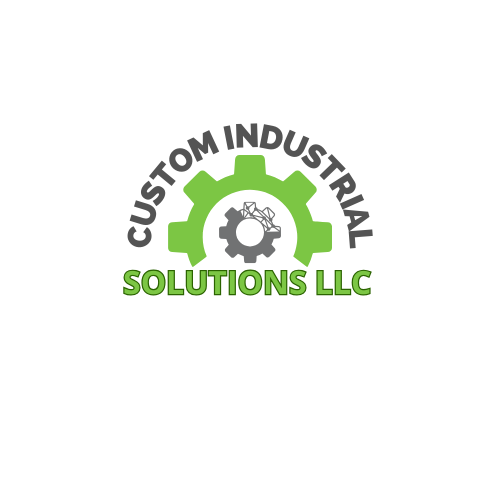Introduction
If you want to know How Simulation Services Improve Assembly Line Efficiency, read on. Assembly lines are the backbone of mass production, allowing manufacturers to scale operations efficiently. However, inefficiencies such as bottlenecks, downtime, and resource waste can limit productivity and increase costs. This is where simulation services come into play, offering advanced predictive modeling to analyze workflows, optimize production, and improve overall efficiency.
By leveraging digital twins and predictive simulation, manufacturers can test various configurations in a virtual environment before implementing changes in the real world. This not only reduces trial-and-error costs but also enhances precision in production planning. At Custom Industrial Solutions, we provide assembly line optimization services.
In this article, we will explore the key benefits of simulation services, how they help companies minimize risk and maximize productivity, and real-world case studies demonstrating their impact on modern manufacturing.
Key Benefits of Simulation Services
1. Process Optimization
One of the biggest challenges in assembly lines is inefficiency caused by bottlenecks, poor resource allocation, and unoptimized workflows. Simulation software helps identify these pain points before they impact production by modeling various scenarios.
By running digital simulations, manufacturers can:
- Analyze production flow and detect inefficiencies.
- Optimize machine placement and worker movement.
- Predict the impact of operational changes before implementation.
This leads to higher throughput, fewer delays, and a smoother production process—without costly trial and error.
2. Cost Reduction
Reducing costs while maintaining quality is a top priority in manufacturing. Simulation services help by minimizing material waste, cutting downtime, and preventing expensive operational errors.
Through predictive modeling, businesses can:
- Lower material wastage by testing optimal configurations.
- Reduce downtime by simulating equipment performance.
- Save money by avoiding costly production failures.
With data-driven insights, manufacturers can make informed decisions that significantly lower operating costs.
3. Error Detection & Risk Mitigation
Production errors can lead to defective products, wasted materials, and potential safety hazards. Simulation tools allow companies to identify weak points before real-world execution, reducing the likelihood of failure.
Benefits include:
- Early detection of defects in the production cycle.
- Improved workplace safety through virtual hazard simulations.
- Reduced chances of costly recalls and compliance violations.
By proactively mitigating risks, manufacturers increase efficiency while ensuring reliability in their production lines.
4. Scalability & Flexibility
As demand fluctuates, assembly lines must be adaptable. Simulation services enable manufacturers to test different configurations before making changes, ensuring seamless scalability.
Key advantages:
- Rapidly adjusting production volumes without costly disruptions.
- Testing new machinery in a virtual environment before implementation.
- Adapting to shifting market demands with minimal downtime.
This flexibility allows companies to remain competitive and efficient, even in evolving industries.
Case Studies: Simulation in Action
1. Automotive Industry – Streamlining Production Workflows

In the automotive sector, precision and efficiency are critical for meeting high-volume production demands. Leading manufacturers, such as Tesla and Toyota, utilize simulation software to analyze factory layouts, optimize robotic workflows, and test assembly line modifications before implementation.
Simulation services have enabled automakers to:
- Reduce assembly time by identifying bottlenecks in conveyor systems.
- Optimize robotic movement for improved accuracy and speed.
- Enhance predictive maintenance, minimizing downtime due to machine failures.
By simulating new production setups, automotive manufacturers can fine-tune operations without costly interruptions, leading to higher throughput and lower defect rates.
2. Electronics Manufacturing – Minimizing Production Errors
The electronics industry relies on intricate manufacturing processes where small errors can result in massive quality failures. Companies like Intel and Samsung use digital twins and predictive simulation to refine workflows, ensuring components are assembled with precision.
Benefits observed in electronics manufacturing include:
- Error detection in PCB (Printed Circuit Board) assembly before actual production.
- Virtual testing of machine configurations to improve efficiency.
- Optimization of cooling and airflow systems in production facilities.
These simulations allow manufacturers to improve accuracy while reducing costly material waste, keeping production lines running smoothly.
3. Aerospace Industry – Enhancing Safety & Efficiency
Aircraft assembly involves highly complex processes requiring extreme precision. Boeing and Airbus use simulation technologies to enhance safety, streamline manufacturing, and reduce production lead times.
With simulation services, aerospace manufacturers achieve:
- Virtual testing of aircraft components before physical assembly.
- Simulation of worker ergonomics to prevent injuries.
- Process optimization for assembling large aircraft structures efficiently.
These applications ensure compliance with industry regulations, prevent costly errors, and accelerate production without compromising safety.
How Simulation Services Improve Assembly Line Efficiency Conclusion
In today’s fast-paced manufacturing world, efficiency is not just a goal—it’s a necessity. Simulation services provide an invaluable advantage by offering predictive modeling, process optimization, and risk mitigation to refine assembly line operations before changes are implemented in the real world.
From reducing production bottlenecks and minimizing downtime to enhancing scalability and ensuring workplace safety, simulation-driven solutions empower manufacturers to stay competitive while maximizing output quality. Real-world case studies—from automotive to aerospace—illustrate how industry leaders use digital simulations to achieve cost savings, accuracy improvements, and operational flexibility.
For businesses aiming to enhance efficiency, integrating simulation services is no longer optional—it’s a strategic imperative. By leveraging simulation software, companies gain data-driven insights that fuel smarter decision-making, enabling them to reduce waste, optimize performance, and prepare for future demands with confidence.
As the manufacturing industry evolves, simulation services will continue to drive innovation and efficiency, making them a cornerstone of modern production strategies. Contact Us today, so we can help you improve efficiency, lower costs, and reduce rick.

